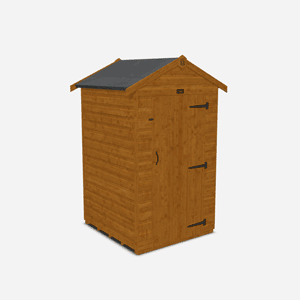Your Guide to Shed Treatment
Published: 27/09/2021
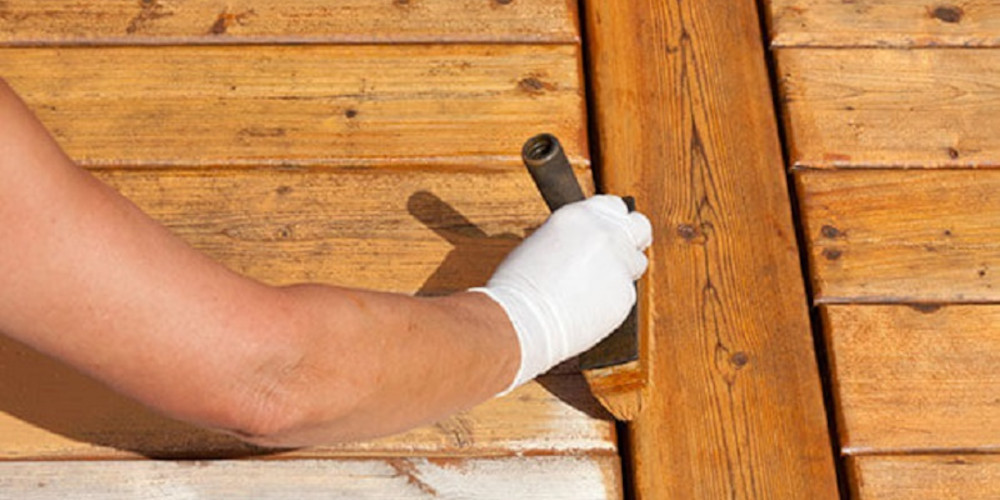
You’ll find references to shed treatment throughout this blog and our entire website. And that’s because it’s vital to the look and longevity of your garden building.
How do I protect my wood shed?
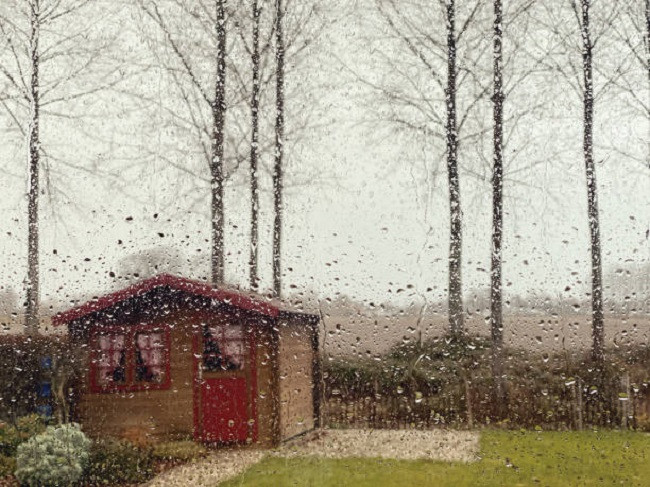
As you’re here, you clearly already know the best way to protect your shed is to treat it. And we’ve stated that shed wood preserver is important to the condition and lifespan of any timber shed. But as there are many shed treatment options on the UK market, you may be looking for answers to any questions you may have. With this in mind, we aim to answer the following:
- What are the different types of shed treatment available in the UK?
- Which is the best wood preservative for sheds?
- Should you treat a new shed?
- Should you treat the inside of a shed?
- Do you need to treat a shed before painting it?
- Where do I find the best waterproof shed treatment?
- How do you treat a shed?
If you need the answer to a specific question, scroll down to find answers you're looking for. Alternatively, please keep the reading…
What are different types of shed treatment available in the UK?
There are many different types of shed wood preserver. But while all claim to do the same job, they’re not all equal. The main two types of shed treatment are water-based and oil-based (also known as solvent-based) - these are usually applied after production (by either the manufacturer or owner). You may have also heard of pressure treated sheds – these undergo a process called tanalisation (pressure treatment) during production.
What are the differences between these shed treatments?
Let’s take a look at each of these three shed treatments in turn…
Water-based shed treatment (dip treatment)
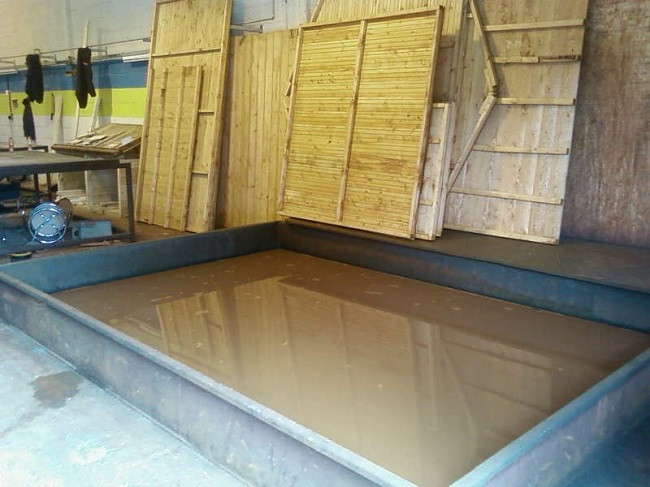
Water-based treatments are the least time-consuming type of shed treatment. This involves dipping the timber in a protective preservative and leaving it to dry. The process of dipping is where ‘dip treatment’ (another term of water-based treatment) comes from. Many sheds are dip treated prior to sale, which help protect the building during transit and for around one month after it is assembled. As a result, it’s vital to re-treat your dip-treated shed or summerhouse at least once per year. And what should use to re-treat your shed on an annual basis? A solvent-based (or oil-based) shed treatment…
Oil-based shed treatment (also known as solvent-based)
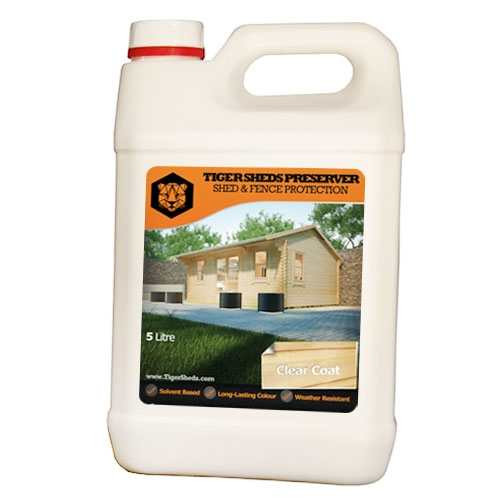
The best oil-based shed wood preserver is designed to penetrate into the grain of the timber to protect the building and enhance its appearance. Again, the highest-quality solvent-based preserver uses a water-repellent formula to protect your shed from the elements. Our Tiger Sheds Preserver is even harmless to plants when dry.
Pressure treatment
 The process of pressure treating timber involves submerging it in specialist wood preservatives at high pressure. As part of this process, the wood goes into a vacuum tank to draw out excess moisture and air. As we say in our post on the benefits of a pressure-treated shed, the specialist wood preserver we use is Tanalith E – the latest generation in wood preservation. This is the origin of the word ‘tanalisation’, which we use as a synonym for pressure treatment. Tanalised sheds are easier to maintain because they’re protected from the elements and all forms of insect attack. And because of this, they can last many years without being re-treated.
The process of pressure treating timber involves submerging it in specialist wood preservatives at high pressure. As part of this process, the wood goes into a vacuum tank to draw out excess moisture and air. As we say in our post on the benefits of a pressure-treated shed, the specialist wood preserver we use is Tanalith E – the latest generation in wood preservation. This is the origin of the word ‘tanalisation’, which we use as a synonym for pressure treatment. Tanalised sheds are easier to maintain because they’re protected from the elements and all forms of insect attack. And because of this, they can last many years without being re-treated.
So, which is the best wood preservative for sheds?
That depends on your point of view. If you’re looking for an aftermarket shed wood preserver, then a solvent-based product like Tiger Sheds Preserver is the best option. But if you want to buy a shed without having to worry about treating it as often, then it may be wise to buy a pressure-treated shed. Note: Before choosing a shed preserver, always check the label. It’s important that you choose a product that’s suitable for your garden building.
Should you treat a new shed?
Yes – absolutely! We recommend treating your new shed as soon as you’ve set it up. You should repeat this process at least once a year.
Should you treat the inside of a shed?
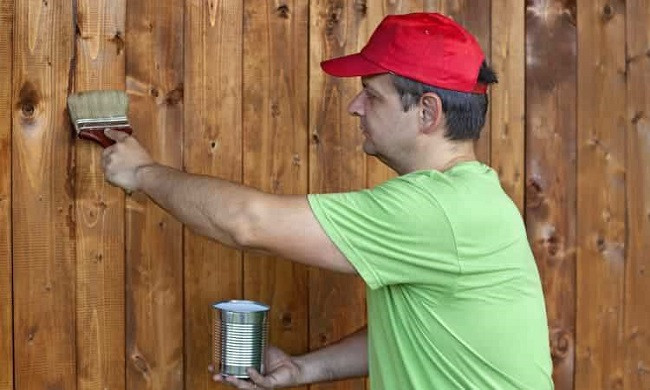
Yes, we recommend treating the inside of your garden building. This should help protect against the build-up of condensation and moisture.
Do you need to treat a shed before painting it?
If you plan on painting your shed with paint that doesn’t contain preserver, then yes – you do need to treat a shed before painting it. But if the paint contains a preservative, then this isn’t strictly necessary. For more information on shed paint, read our article on how to paint a shed.
Where can I buy the best waterproof shed treatment?
We believe the best waterproof shed treatment is Tiger Sheds Preserver, which you can buy here. This is available as a clear shed treatment, as well as in ‘Dark Oak’, ‘Mahogany’, and ‘Red Cedar’.
Can you use fence paint to treat your garden shed?
That depends on your type of shed. While a good fence paint formula will come with a preservative, they are designed for rough-sawn timber. The best sheds use shiplap cladding planed timber for a more ‘premium’ look and feel, which means fence paint isn't suitable for this type of building. However, the less expensive overlap sheds tend to use rough-sawn timber, so a decent fence preserver or fence paint (with a preserver in the formula) should be fine to use on an overlap building.
How to treat a shed
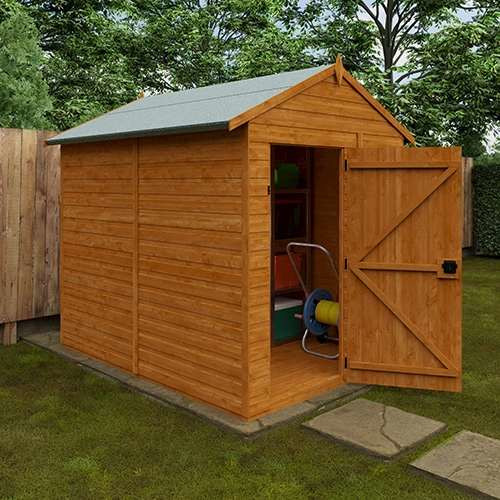
Throughout this article, we’ve established that it’s best to use a shed preserver – and that Tiger Sheds Preserver is the best treatment for outside wood. But how should you apply it? Here’s a step-by-step guide:
1. Gather everything you need
To treat your shed, you’ll need the following:
- 2 exterior shed and fence paint brushes
- Boiler suit or old clothes
- Protective mask and gloves
- Shed wood preservative
- Fungicidal wash (if treating an older shed)
- Bucket
As both water-based and solvent-based shed preservers contain fungicides to protect your garden building from mould and insect attack, it’s important to protect your skin and eyes – which is why we recommend using a protective mask and gloves. And as we state earlier in this post, it’s also important to use a shed timber treatment that’s suitable for your shed – so check the label before buying or applying.
2. Wash the shed (for older sheds)
If you have a new shed, you can ignore this step and move to step 2. But if you find mould, lichens or algae or other types of fungus on your older shed, it’s important to wash it before applying the shed preserver. Why? Because while shed preserver prevents the build-up of fungus, it won’t remove any existing issues. To clean the shed, use a fungicidal wash. Mix in one part fungicidal solution with four parts clean water. Use one of your brushes (a different one to the one you’ll use to treat it later) and apply the solution liberally over the surface of the affected area.
3. Apply the shed preserver
Use your second paintbrush to apply the wood preserver – and make sure you cover the whole shed (both inside and out).
4. Prime and paint it
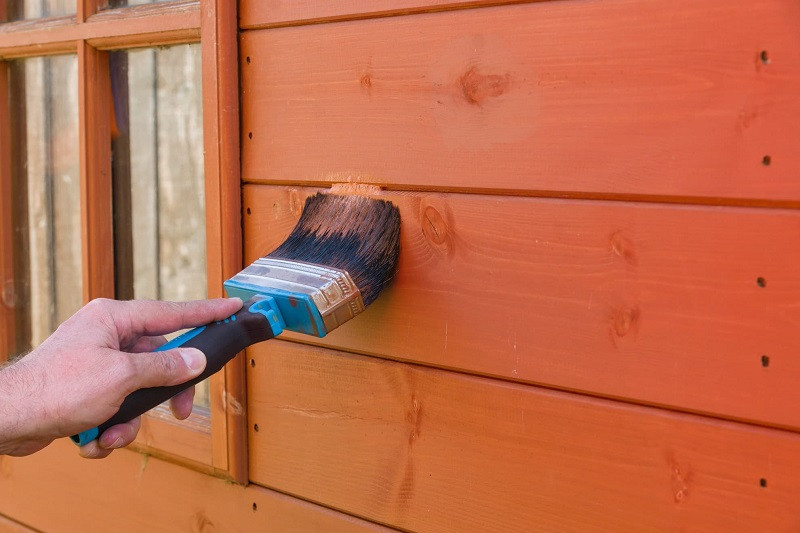
The next step after applying the preservative to your shed is to paint it - although you don't have to do this. Many of our customers like the 'Burnt Orange' colour of our unpainted sheds and summerhouses. But if you want to paint your garden building, you'll find a a step-by-step guide on how to do this in this post.
We hope you found our shed treatment guide useful. For more handy tips on sheds, go to our blog homepage.
Or
to browse our range of high-quality garden buildings, go to Tigersheds.com.


